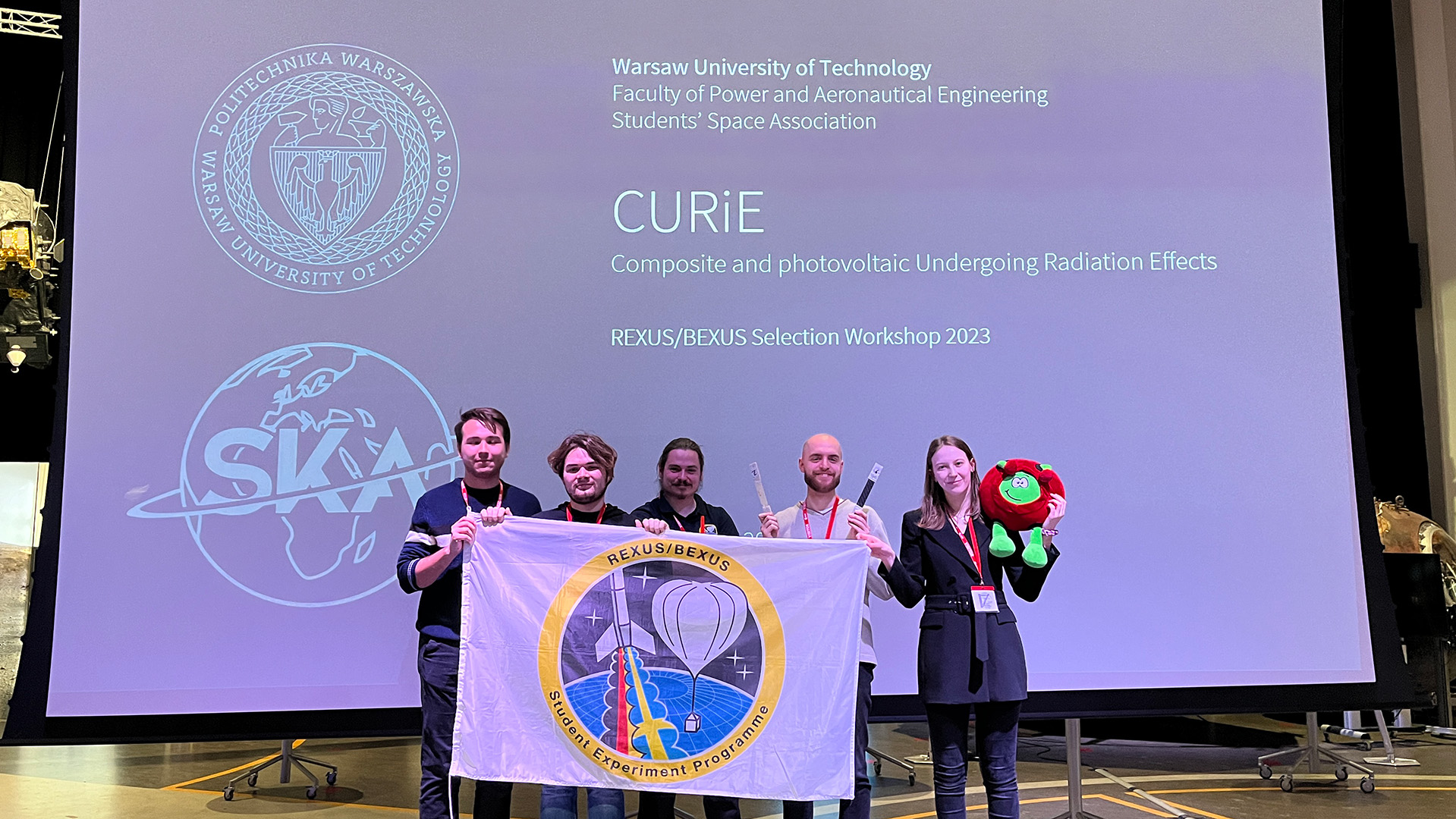CURiE Mission

Part of the CURiE team involved in the reconstruction of the Columbus module of the International Space Station
A new project of our students
Studying the impact of UV light on composite samples and the impact of space radiation on solar panels – these are the aims of the CURiE projects. Our students’ experiment has qualified for the international programme BEXUS.
For years, the German Space Agency and the Swedish National Space Council, in cooperation with the European Space Agency (ESA), have been running the BEXUS programme. Thanks to it, students of European universities can conduct scientific experiments with the use of a stratospheric balloon which launches the research apparatus they design and construct.
– Such experiments contribute to enhancing the knowledge on the conditions in space – explains Dominika Pytlak from the SKA Students’ Space Association, operating at the Faculty of Power and Aeronautical Engineering.
The student coordinates the CURiE project, which qualified for the programme and will participate in the launch campaign.
On the way to the spaceport
– At the end of November, part of our team went to the centre of the European Space Agency ESTEC in the Netherlands, where they presented the experiment before the jury. Two weeks later we learnt that our project was selected for the programme – says Dominika Pytlak. – There are still two trips ahead of us during which we will present our progress – she adds.
The most intense period for the 9 members of the team will be the summer, which is the time of assembling and testing the devices. All the time students may count on the support of ESA experts, who do not only supervise the project but also share their knowledge and give valuable advice.
– The launch campaign is planned for October. Our team will visit the Esrange Space Center located near Kiruna in north Sweden. For several days we will be preparing for the launch of the balloon – says Dominika Pytlak. – This is not the end of our work, however. Then we will analyse the results and prepare the final report – she adds.
Studies on radiation
The team from the SKA Students’ Space Association wants to study the impact of ultraviolet and ionising light on composite materials and of space radiation on photovoltaic panels.
In the first part of the experiment, the predicted changes include degradation of the materials surface and changes in their structure. We will use two sets of samples. One of them will be exposed to radiation and the other one, the control one, will remain on the Earth. After the flight, the samples will undergo mechanical tests and the obtained results will be compared with the results obtained from the control sample tests. The studies may contribute to the development of more resistant materials to be used in space industry.
And what will the panel experiment involve? – Especially darkened (covered) polycrystalline photovoltaic panels will be exposed to space radiation in the stratosphere - much higher than on the Earth. They will thus not provide electrical energy from visible light but we expect electric signals occurring due to the capture of high-energy quants from space – explains Dominika Pytlak.
This phenomenon cannot be measured on board of satellites and it contributes to degradation of silicon structures on the panels, gradually decreasing their capacity.
– Thanks to the experiment we will be able to determine its intensity, for example in the context of applications in nuclear radiation detectors or gamma voltaic batteries and the impact on panels degradation – adds Dominika Pytlak.
The next adventure
Since students concentrate on studying radiation, like Maria Skłodowska-Curie, they have chosen the Polish-French scientist for the name of their project.
The CURiE team consists of: Dominika Pytlak (leader), Paulina Kucharczyk, Jakub Czerniej, Damian Legutko, Korneliusz Szałkowski, Karolina Styrna, Sandra Wąsowska, Mikołaj Salamon and Hubert Tronowski.
It is the sixth time that the students of the SKA Students’ Space Association have participated in the BEXUS programme. The last experiment that was conducted was the TOTORO mission in September 2023.








